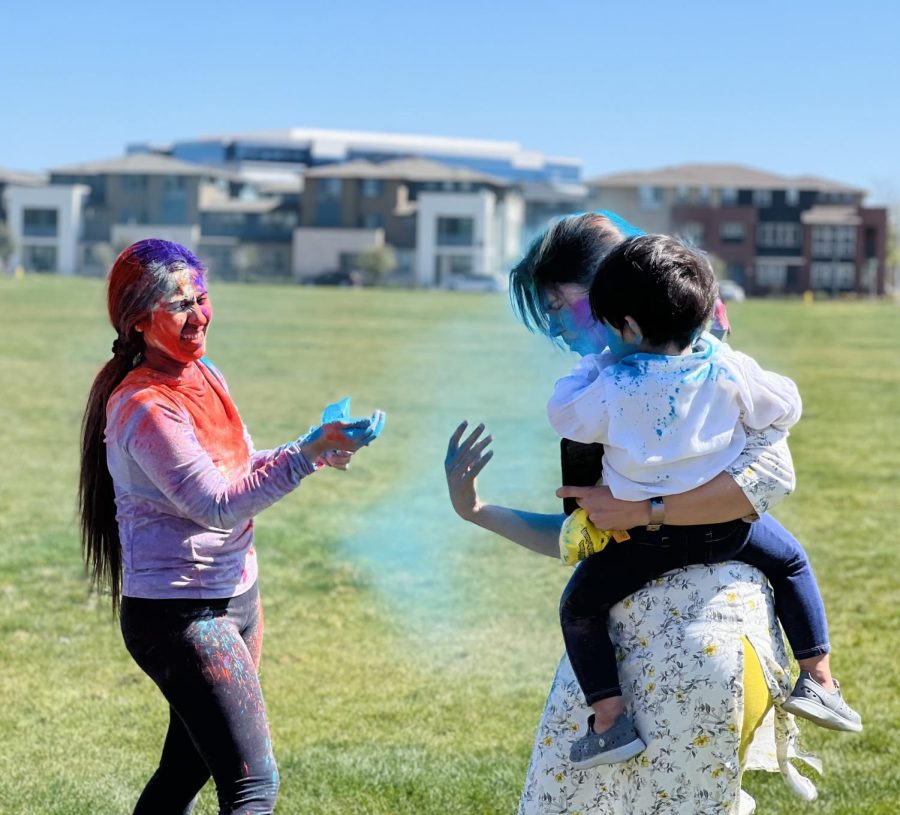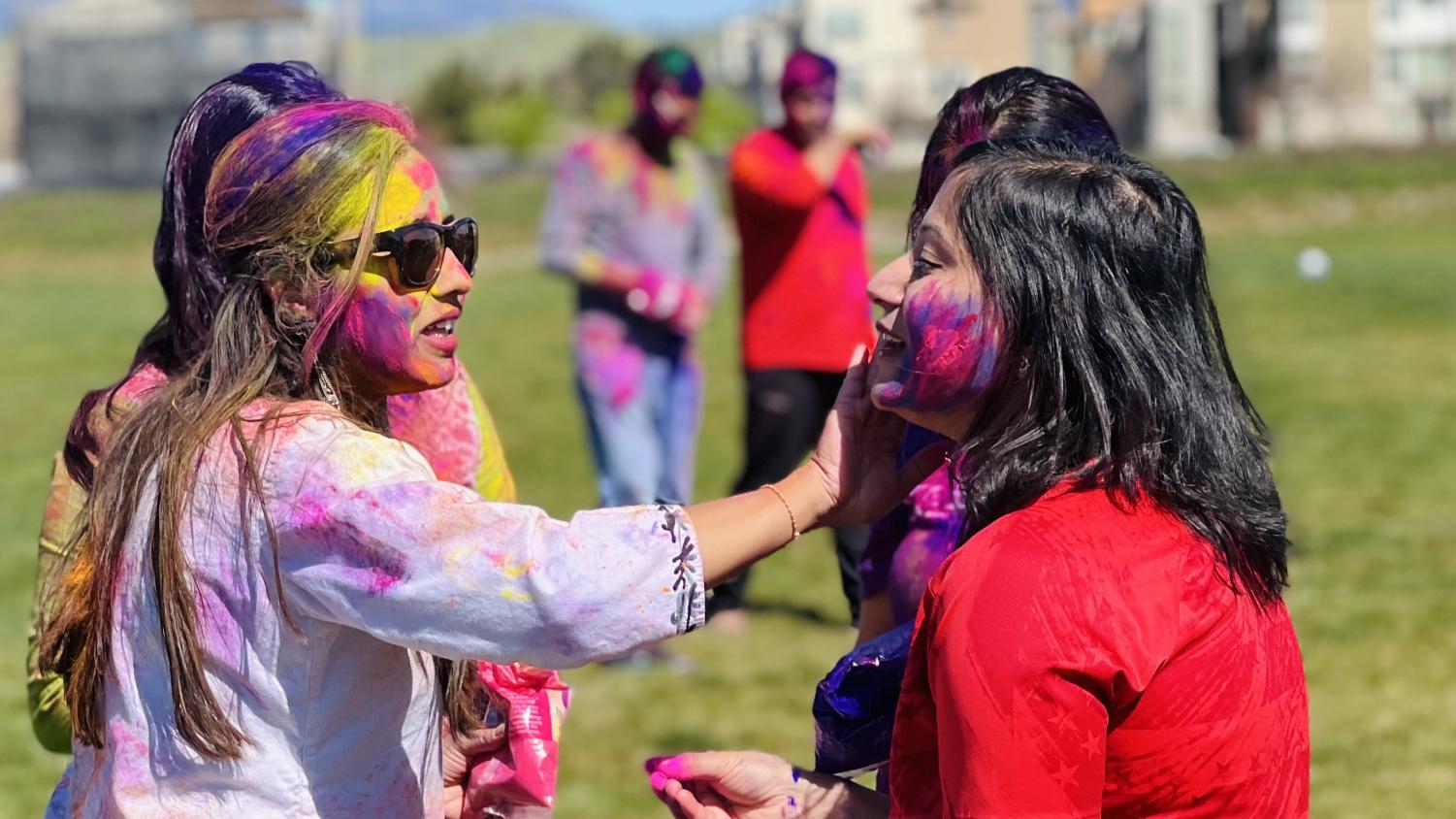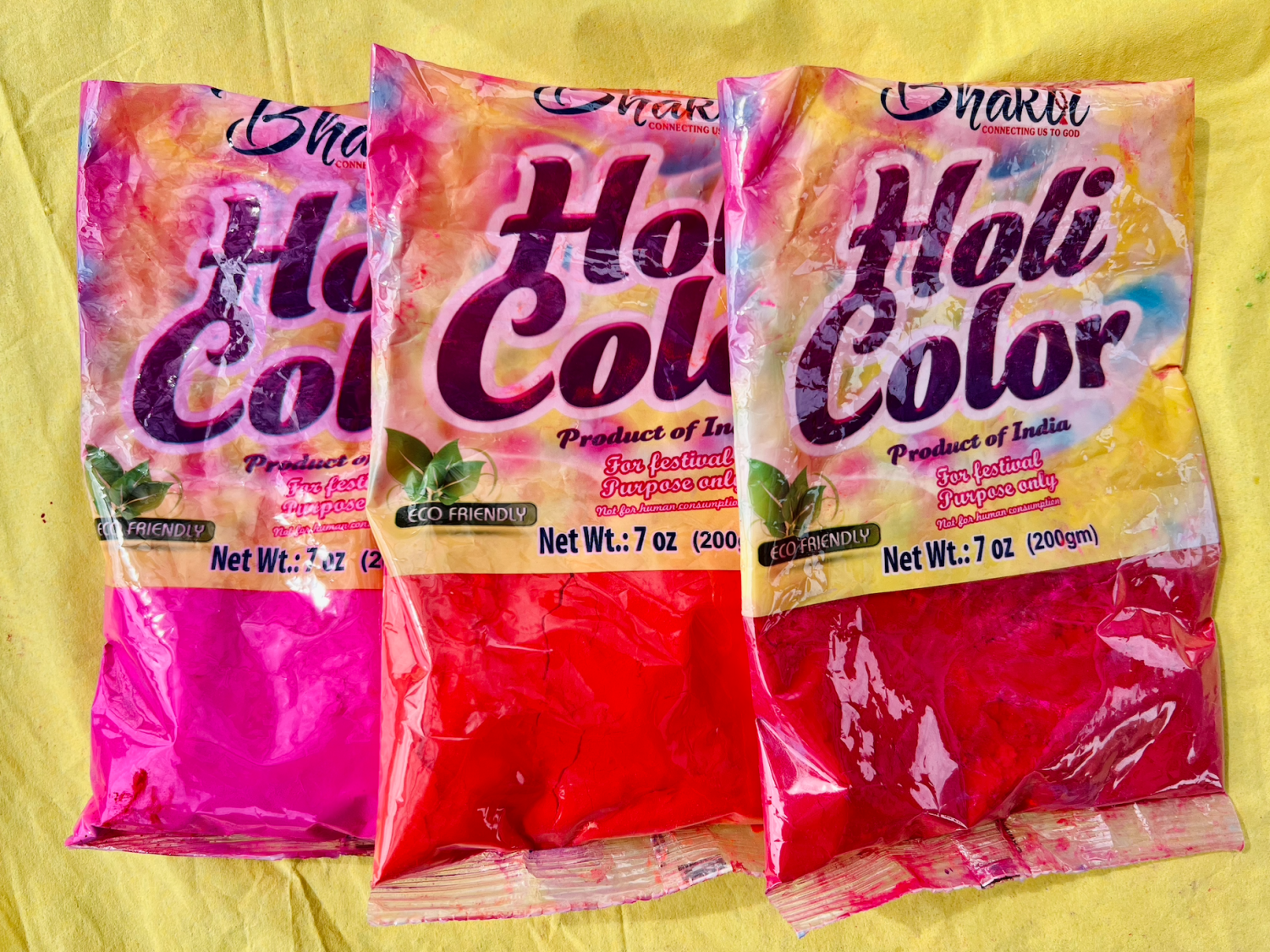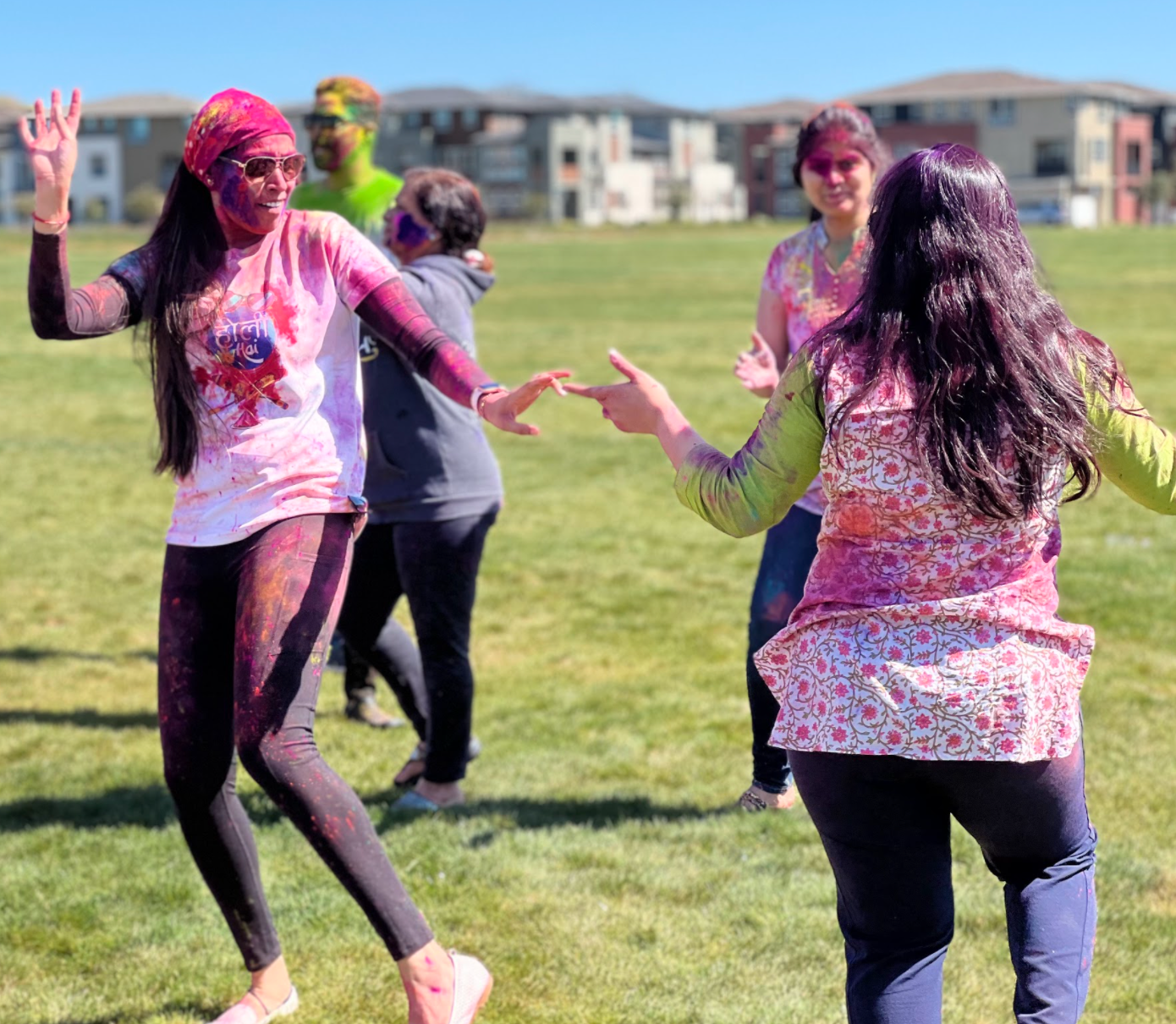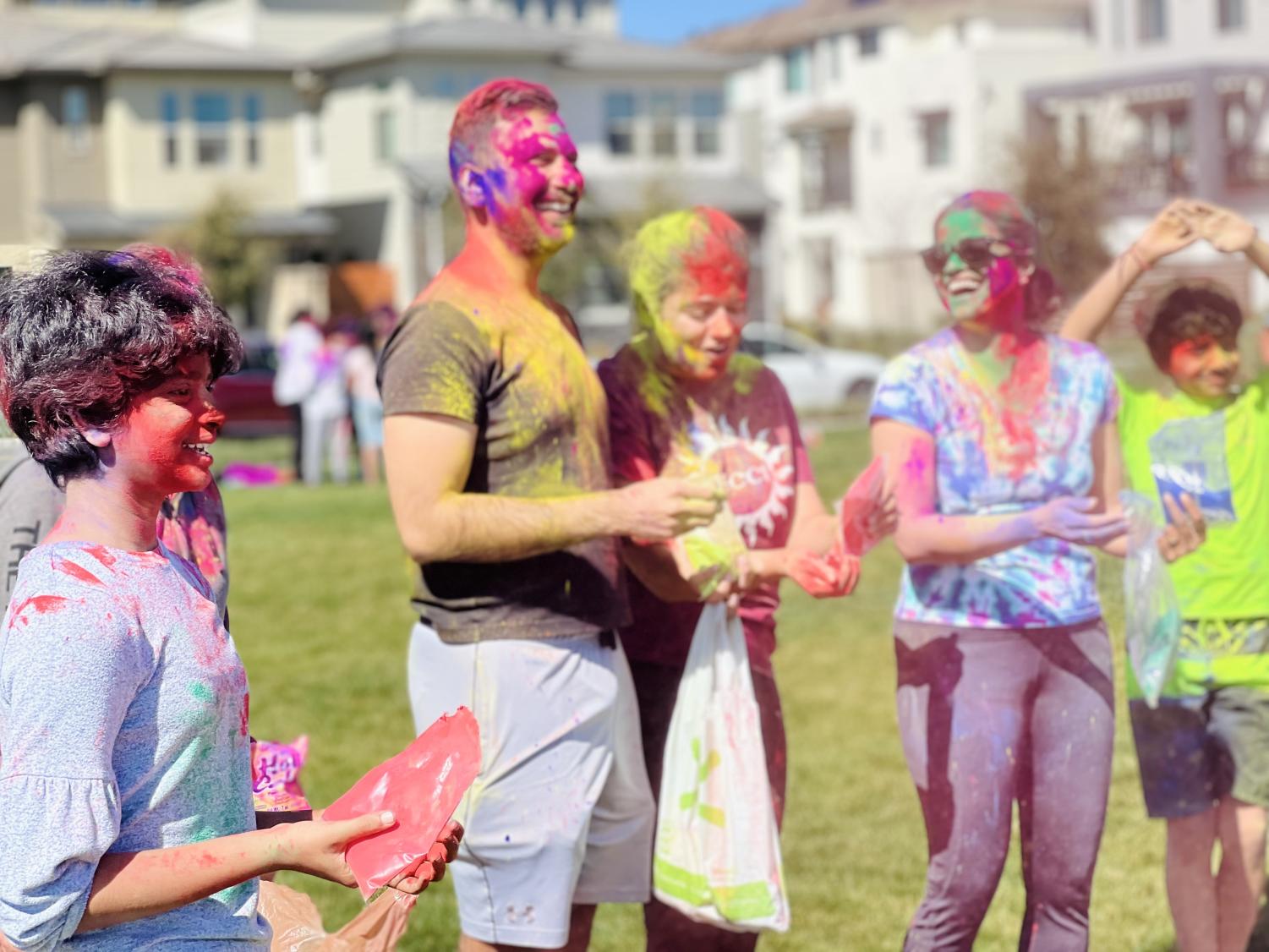Indian communities celebrate Holi, the Festival of Colors
Holi powders color the ground and fill the air as attendees are bombarded with colors from all directions in the spirit of celebration.
This past week, Indian communities throughout the Bay Area celebrated the festival of Holi, smearing colors on friends and family, meeting new people, and gathering to celebrate the triumph of good over evil.
“Holi allows people to spend time with their loved ones while celebrating a long-standing tradition in Indian culture,” said Bhavyaa Sharma (‘24).
According to various poems and documentation dating back to the 4th century CE, Holi has been celebrated in the Indian subcontinent for centuries. It marks the beginning of spring after a long winter, ultimately being symbolic of the triumph of good over evil.
“Holi is celebrated to welcome the new spring season, and it is a day where families and friends can throw lots of colors on each other,” said Arnav Murarka (‘24).
Despite originating in the Indian subcontinent, the Hindu festival of colors has more recently gained popularity across the globe, with Holi events organized across the United States, Africa, Europe, and elsewhere.
“Holi is really a global festival, because there are Hindus all over the world who are very religious and celebrate together. They throw big street parties where they smear people’s clothes with colors. It is truly celebrated everywhere and the festival has real significance,” said Murarka.
The story behind Holi details the journey of an evil king who tried to kill his son, Prahlada, for being an ardent devotee of the Hindu deity Lord Vishnu. Holika, in an attempt to aid her brother (the king), persuaded Prahlada to sit in a prye with her. But, Prahlada’s devotion left him unscathed while Holika, who was supposedly immune to fire, burned to death.
“The story of Holi is important, because it shows how, till today, people commemorate the story of Holika, Prahlada, and Vishnu. It really is an indication of how devoted people are to tradition and culture – which is especially nice to see in today’s times,” said Slalom Holi Event Coordinator Kirtida Nannoo.
On the day itself, blue, pink, red, green, and yellow colored powder fill the air as entire neighborhoods rejoice in the celebration. Also, in the latter part of the day, families gather to observe the festivity together, often engaging in puja (prayer) using various mantras and bhajans (religious hymns).
“We celebrate Holi by cooking special food for the day and by going to a family-friend’s house. Sometimes, we also go to a party so that we can throw colored powder together,” said Murarka.
More recently, dancing and singing have also become a central part of Holi, as famous tunes such as Balaam Pichkari, Soni Soni, Rang Barse, and Jai Jai Shivshanker play repeatedly and invigorate crowds at events throughout the world.
“My favorite Hindi song is Zaalima. I love how peaceful it is and it gets me excited and in the mood to celebrate,” said Sharma.
Numerous companies, with aims at promoting inclusion and diversity, have also organized Holi events as part of a campaign to celebrate various cultures on a more global level.
“We put together a Holi function for the company where I work – we invited employees to join so that they could get a better idea of what the festival represents and have some fun throwing colors at the same time,” said Nannoo.
Ultimately, Holi, at its core, is an embodiment of hope, joy, and eternal devotion. Its generational makeup will continue to epitomize the essence of Indian culture and tradition for centuries to come.
“Holi will always be an important part of my life. It is a chance for people everywhere to come together and celebrate something bigger than themselves,” said Sharma.
Your donation will support the student journalists in the AVJournalism program. Your contribution will allow us to purchase equipment and cover our annual website hosting costs.

